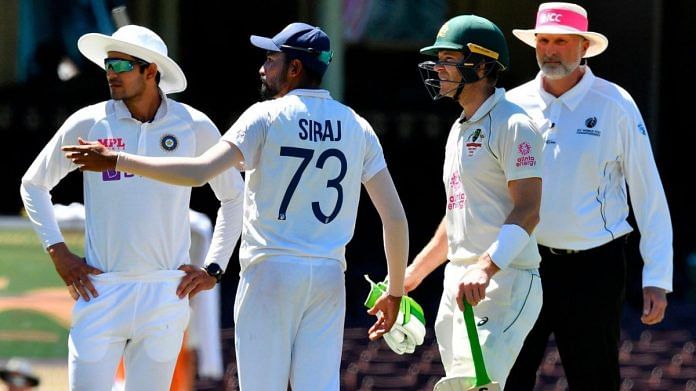New Delhi: India’s feat of drawing the third Test against Australia in Sydney against the odds was the subject of episode 658 of ‘Cut The Clutter’, as ThePrint’s Editor-in-Chief Shekhar Gupta explained why the result drew more chatter and celebration than even India’s victory in the previous Test in Melbourne.
Gupta pointed out that very few Test matches last the full five days anymore, and even those that do, are rarely drawn. He said a draw can very often feel like a victory or a defeat.
“If you look at what happened … at Sydney Cricket Ground, India would see what happened as a victory and Australia would see it as a defeat,” he said.
This, Gupta explained, was because Australia had declared their second innings after reaching a dominant position, setting a target for India that they thought couldn’t be achieved. Thus, there was only one team trying to win — Australia — and they did not achieve their objective.
Gupta went on to add that this didn’t just seem like a victory for India but for Test cricket as well, as it showed that one could be absorbed for five days and the match could end in a draw and still provide good value for money.
Gupta then delved into history and compared this draw to the 2009 Napier Test against New Zealand, in which Gautam Gambhir had played “the innings of his life”, batting 643 minutes to secure a draw. He also recounted another match-saving Gambhir knock at Newlands, Cape Town, against South Africa in 2011, and a Parthiv Patel-Zaheer Khan rearguard at Trent Bridge against England in 2002.
‘What did Supreme Court achieve?’
Gupta then turned to the Supreme Court’s intervention in cricket administration in the last decade, which he thought was unwarranted. “What did the Supreme Court achieve in three years?” he asked. “Not one charge has stuck.”
He then talked about the nostalgia of fans, who think Indian cricket has deteriorated over the years and decades. But using data, Gupta pointed out that of the first 100 Tests played by India from 1932 to 1967, India only won 10.
“If India won a Test match, it used to be a national celebration then. In fact, we used to then be desperate to see New Zealand come to India, because that was the one team we could beat those days,” he said.
Over the next 25 years from 1967 to 1991, 174 Test matches were played and India won 34. “So India’s winning record doubled from 10 per cent to 20 per cent,” he said.
And then, from 1992-2017, India’s winning percentage doubled again to 39.2 per cent. Since 2017, India’s winning rate has gone up to 45 per cent, just behind Australia, tussling with South Africa, and ahead of Sri Lanka, England and Pakistan.
“Now, did this state of Indian cricket justify the venerable Supreme Court wading into it and messing things up again? They left it like a bad surgeon,” Gupta said. “It is that patient of Indian cricket that’s now recovering.”
He then touched upon how fast bowler Mohammed Siraj had responded to racist taunts from the Sydney crowd.
Also read: Virtual to cardboard audiences, DIY training — 2020 pushed athletes to keep sports alive
Ashwin and bowlers’ brilliance
Returning to the Sydney Test, Gupta turned his attention to Ravichandran Ashwin, who took body blows but stood tall to help India draw the match.
While everyone was celebrating Ashwin’s batting, Gupta said his bowling needed a special mention as he has the best strike rate for any spin bowler since World War 2 — at 54 balls per wicket, better than Muttiah Muralitharan’s 55 and Shane Warne’s 57.
Gupta praised India’s fast bowlers as “wonderful”, and called them the “canniest” in the world. He also pointed to India’s excellent bench strength, saying that with three first-choice pacers out (Ishant Sharma, Umesh Yadav and Mohammed Shami), the bowlers were still able to hold their own against the best line-ups in the world.
Stand-out moment
For Gupta, the stand-out moment of the Test match was before it even began, when the national anthem played and Siraj couldn’t hold back tears. “It reminded you that playing for the country in a Test match is such an emotional experience,” Gupta said.
Then, Siraj did not take the nonsense chanted at him by the spectators, which was a far cry from Indian cricketers of the past, Gupta said, calling it a tribute to “a new India, a changed India”.







And now, the same Supreme Court has waved into farm laws! Who will run the country, the democratically elected government or the Supreme Court?